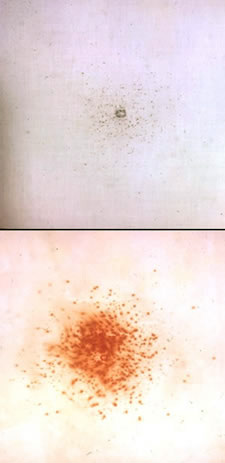- 01: Introduction
- 02: History
- 03: Propellants, Firearms, and Ammunition Development
- 04: Modern Firearms Manufacture
- 05: Small Arms Ammunition
- 06: Evidence Handling Procedures
- 07: Equipment and Instrumentation
- 08: Examination of Firearms
- 09: Cartridge and Shotshell Examination
- 10: Characterization and Evaluation of Fired Projectiles
- 11: Bullet Comparison and Identification
- 12: Gunshot Residue and Distance Determination
- Introduction
- Objectives
- AFTE Knowledge and Ability Factors
- Powders and Residues
- Examination
- Distance Determination
- Significance of Results
- Contact Shot
- Nitrite Residues
- Vaporous Lead Residues
- Residues Consistent with the Passage of a Bullet
- Residues Consistent with the Discharge of a Firearm
- Interpretation Challenges
- Reproduction of Results
- Nitrite Residue Patterns
- Shot Patterning
- Chemical Testing
- Shot Pattern Reproduction
- Selected Bibliography
- 13: Toolmark Identification
- 14: Communicating Results
- Resources


Nitrite Residues
Home > Gunshot Residue and Distance Determination > Distance Determination > Nitrite Residues

Modified Griess Test results
of shot at three inches
As the muzzle-to-target distance increases, the presence of nitrite residues becomes more important in determining distance. Patterns of chemically detectable nitrite residues of varying size and density can be found around a suspected bullet hole. These are extremely useful deposits and are often not visible, even microscopically. Through the application of the Modified Griess Test, these patterns can be detected. The patterns increase in diameter and decrease in density up to a point where no discernable pattern exists, simply scattered positive results. At greater muzzle-to-target distances, no nitrite residues will be deposited.
When a pattern of nitrite deposits is found around a suspected bullet hole, it is possible to reproduce this pattern using the suspect firearm and ammunition. When only scattered nitrite residues (not in a pattern) are found around a suspected bullet hole, it is possible to fire a succession of known distance patterns using the suspect firearm and ammunition to determine the maximum muzzle-to-target distance.
Visible Gunpowder
Prior to the ability to chemically test for nitrites, visible unburned or partially burned powder residues were used as a basis for a pattern or for a maximum distance determination. However, this obsolete approach ignores the frequently invisible nitrite residues and limits the specificity of the conclusion. Visible examination without chemical confirmation does not constitute a complete examination or an appropriate basis for conclusions presented in court.




